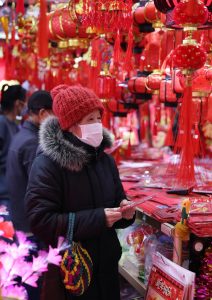
The most significant and culturally significant event in China is Chinese New Year, which also serves as a major internal catalyst for the development of the industrial sector and domestic spending. Consumption of Spring Festival goods has changed from the traditional purchase of Chinese New Year goods to festive goods and services with contemporary characteristics, such as Chinese New Year works, product crafts, leisure, and entertainment, as the national economy of China continues to expand quickly and residents' personal disposable income rises. A special "Spring Festival Economy" has developed during the Spring Festival as a result of the enormous flow of people, money, materials, information, and art. This prosperity has spread to all areas of culture, trade, transportation, tourism, telecommunications, finance, and catering.
Transportation
The World's Largest Population Migration, the World's Largest Population Migration, the World's Largest Population Migration
"Spring Festival Trans" refers to transportation during the Chinese New Year. It is a one-of-a-kind transportation time in China. It is a nationwide transportation peak defined by the Spring Festival, 15 days before the festival and 25 days after the festival, for a total of 40 days, issued by the State Economic and Trade Commission (the starting and ending times vary slightly each year), with the Departments of Railways, Communications, and the General Administration of Civil Aviation making special transportation arrangements in accordance with this schedule. Over the course of about 40 days, more than 2 billion individuals will move, accounting for almost one-third of the world's population.
Spring Festival in different countries
As China's comprehensive national power has increased significantly, the field of Chinese cultural radiation has also expanded. The significance of Chinese New Year has grown beyond the Chinese context to have a worldwide impact.
Neighboring countries have always been influenced by Chinese culture. In the Korean Peninsula, the Lunar New Year is called "New Year's Day" or "Old Year's Day", and the first three days of the first month are a national holiday. In Vietnam, the Lunar New Year holiday runs from New Year's Eve to the third day of the first month, with a total of six days off on Saturdays and Sundays.
Some Southeast Asian countries with a large Chinese population also designate Lunar New Year as an official holiday. In Singapore, the first to the third day of the first month is a public holiday. In Malaysia, where the Chinese make up a quarter of the population, the government has designated the first and second days of the first month as official holidays. Indonesia and the Philippines, which have a large Chinese population, designated Lunar New Year as a national public holiday in 2003 and 2004, respectively, but the Philippines does not have a holiday.
Japan used to observe the New Year according to the old calendar (similar to the lunar calendar). After switching to the new calendar from 1873, although most of Japan does not observe the old calendar New Year, areas such as Okinawa Prefecture and the Amami Islands in Kagoshima Prefecture still retain the old calendar intact.
In Vietnam, the Lunar New Year is considered to be a time to say goodbye to the old and welcome the new, and preparations for the New Year usually begin in mid-December of the lunar calendar. On New Year's Eve, every Vietnamese family prepares a sumptuous New Year's Eve dinner, where the whole family gathers for a reunion dinner.
Chinese families in Singapore get together every year to make New Year's cakes. Families gather together to make various kinds of cakes and talk about family life.
To conclude,With the coming of China's most important holiday of the year, the coolnet team will be on vacation from January 19, 2023 to January 28, 2023, wishing all of our clients good health and all the best.
